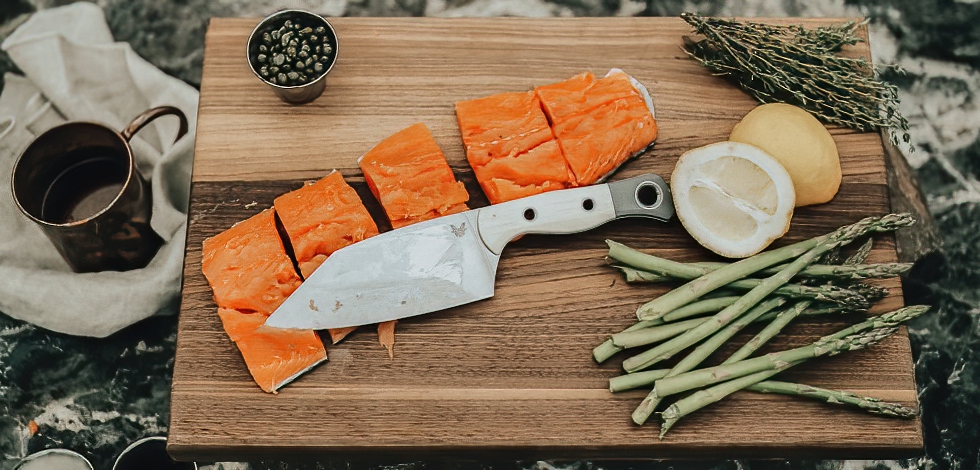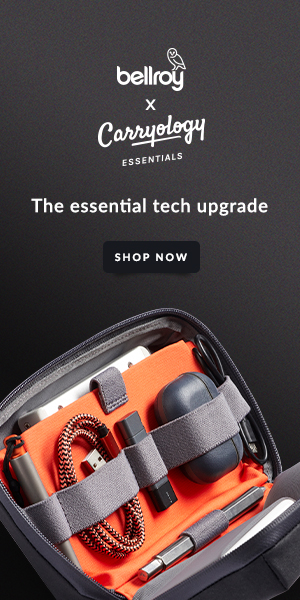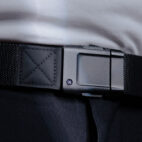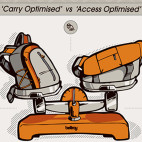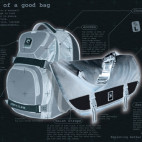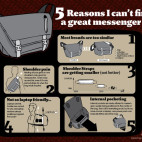Benchmade Culinary | Bringing EDC Into The Home
It’s hard to imagine but Benchmade has been making knives for over thirty years and started out with the balisong aka butterfly knife, the iconic self-defense weapon of the Philippines. The company’s logo, the butterfly, is a simple reminder of where it all started with founder, Les de Asis.
Since then, they’ve grown to the very top of the EDC knife world, known for their innovation, world-class design, and quality, but what most don’t know is: the Oregon company has had a decade-long aspiration to enter a new market. The home.
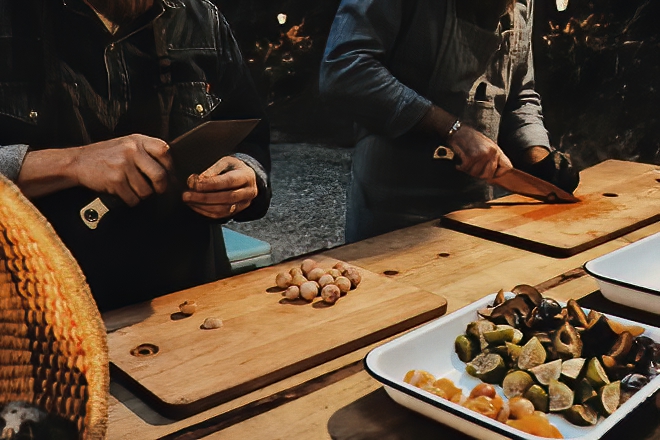
It seems like a logical evolution – EDC knife company makes kitchen knives, right? Almost all of the knowledge and technology transfer: steels, hardening, handles, and balance. Suffice it to say, it’s not that simple and that’s why you can count instances of this happening on one hand. As someone who loves to cook and has my own collection of carefully curated Japanese cutlery, I was intrigued. Could the company whose products I’ve carried for twenty years in my pocket, deserve a place in my knife block?
We decided to head the Benchmade HQ to find out.
When I traveled to Oregon to visit Benchmade and speak to not only the head of marketing but also the employees on the production floor and the president of the company, I soon discovered that building a Cutlery program has been a focus of theirs behind-the-scenes for years, and they’ve been testing and fine-tuning and building to this moment for a very long time.
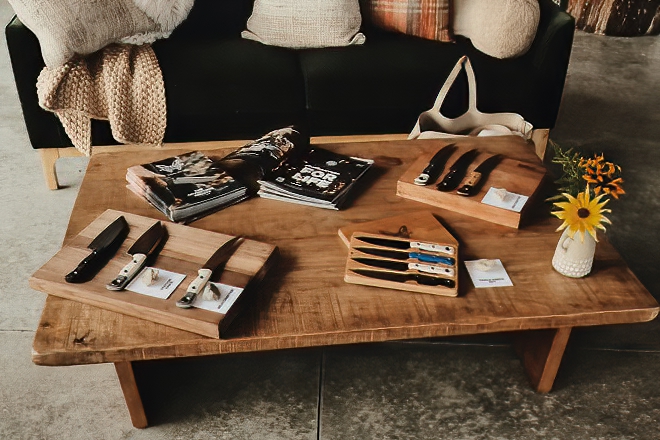
Touring the facility, was a really enlightening experience. Nearly every component in a Benchmade product is produced and finished in-house. To prepare for this new product line, Benchmade invested millions of dollars in new machinery, as well as countless time spent on developing new techniques. For example, each of their blade handles is comprised of a front and back piece, and each can be a different material, but still need to mate seamlessly. I followed the process of a knife through 17 stations, from the raw sheet metal being laser cut into blanks, until final assembly, quality control, and ultimately shipping. It takes a staggering 36 hours to build a knife from start to finish.
I spoke with their head of material science in their testing lab where he and his team have done extensive testing on different metallurgies and how different amounts of carbon and the structure of the elements that make up steel and how they are aligned can affect sharpening, edge retention, chipping, and more. I learned the difference between high-carbon steel (Japanese) and low-carbon steel (European) and the fine balance between corrosion resistance versus hardness. Benchmade landed on 440C and CPM-154 because of the amount of carbon and alloy elements in the steel. This allows the Cutlery line to reach high hardness levels while the carbides help resist the wearing down and dulling of the blades.
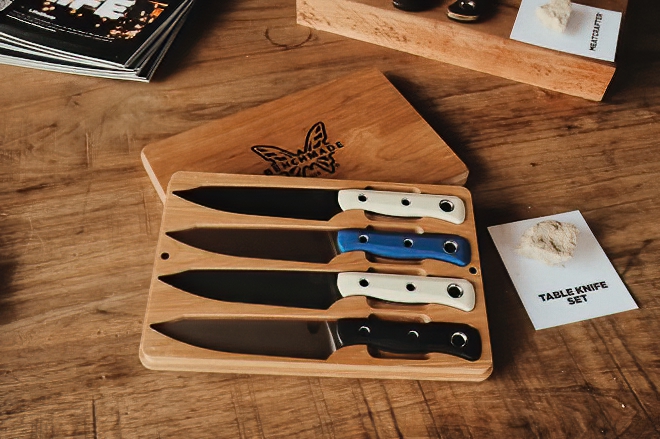
If you’ve been following the brand, you’ll know that Benchmade dipped their feet in the water by launching the Table Knife Set a year ago. This was the first glimpse at what the company had in mind. This set of four knives features full-tang CPM-154 steel blade and G-10 scales. They are housed in a red birchwood case made by custom woodworker H. Arnold Wood Turning. They reminded me of a cross between a Japanese Petty knife and a rugged fixed blade knife. Taken at face value, this would appear to be a really really expensive set of steak knives but the interesting size and blade shape hint at more. And certainly, on review, the Table Knife could certainly handle many cutting and slicing tasks in the kitchen. However, it wasn’t versatile enough as a do-it-all knife.
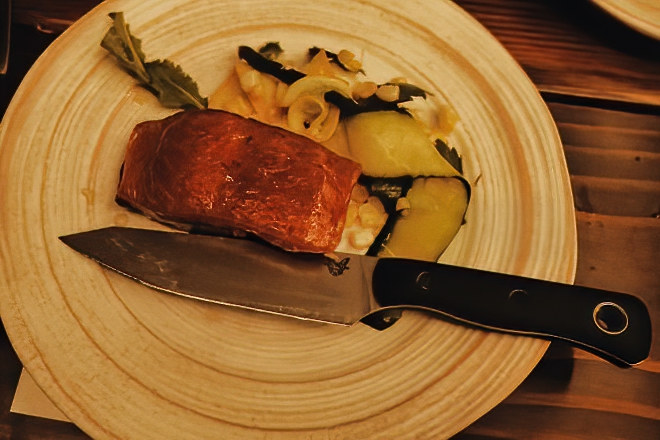
Nearly a year has passed since the Table Knife release, and Benchmade are back with four new knives. Having fine-tuned their production processes as well as machinery (editor’s note: I saw some really cool stuff behind the scenes that I can’t share, so watch this space!), Benchmade is ready to make a mark in the home and earn a place in the kitchen.
First up is the most interesting kitchen knife I’ve ever seen or used – the Station Knife. It was designed in collaboration and with feedback from Chef Kyle Mendenhall. Named after the “stations” that make up a professional restaurant kitchen, this knife is meant to do it all. Offered in two blade steels, CPM-155 or 440C, and different handle and pivot ring materials and finishes, you can truly design something personalized to your style. In fact, there are over 700 different custom combinations possible!
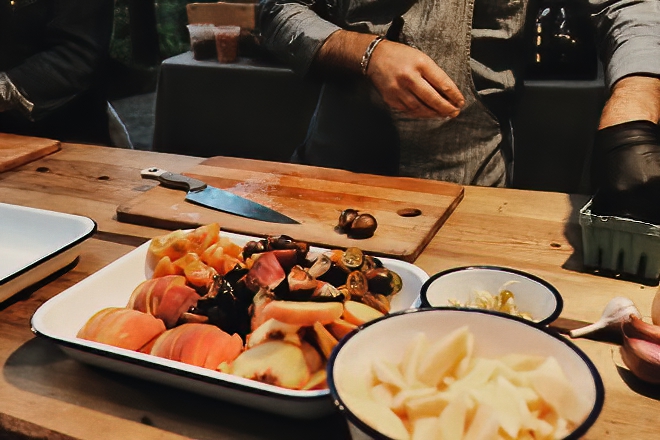
The first thing you notice about the Station Knife is the shape. It’s tall like a Chinese cleaver but has a pointy tip like a Gyuto or a chef’s knife. I expected it to be heavy but it’s incredibly light and well balanced. This duality in design means the knife can excel at both chopping and slicing tasks but also more delicate operations like scoring skin or finely fanning green onion stalks. I am used to Japanese kitchen knives which have a more acute angle compared to Western blades. In fact, Benchmade uses their proprietary SelectEdge sharpening technique on the Cutlery line which provides a repeatable razor-sharp edge with an inclusive angle of 14 degrees. Compare this to the 30-35 degree angle most EDC knives are at and it’s a big difference.
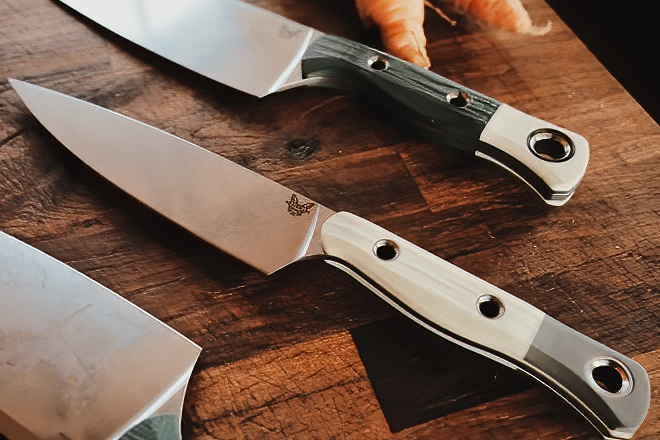
Despite its jack-of-all-trades design, some home cooks might desire a more granular approach to their kitchen toolkit. Enter: the 3 Piece Set. This includes an 8″ Chef knife, 6″ Utility Knife, and 4″ Paring knife. Again, each is offered in the same two blade steel and finishes, and just like the Station Knife, you are able to customize each with from a selection of G10, Richlite and Carbon Fiber handle options. Progressively moving down in length, each excels at a different task. The Chef’s Knife, on the largest end, is great for cutting through larger food items; the large handle fits comfortably in the hand to avoid fatigue. While the Paring Knife is best for really precise work, often with the food item held in the opposite hand (think: peeling fruits and vegetables).
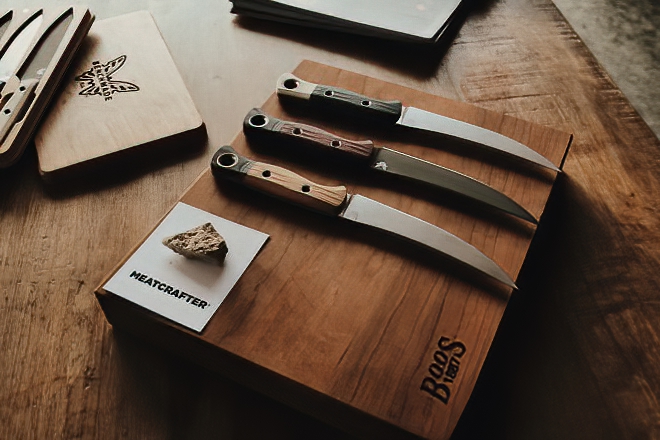
Rounding out the collection is The Meatcrafter, a hybrid fixed blade with a sweeping belly, designed to trim, debone, or slice meat. Here you have what Chef Mendenhall calls: “the best parts of a boning knife and fillet knife all in one”. And what I would say is the most specialized of the offering. But, for those who devour a large amount of meat, this is one versatile knife!
Having seen first hand the thought and care that has gone into the Cutlery line, then being able to see it made right here in America, and finally cooking with it in my own home kitchen, I am convinced that Benchmade will achieve their goal of moving from pockets to home kitchens. There’s real thought and passion that’s gone into the program, making for an impressive experience from start to finish.
At dinner, Joe Prebich, the VP of Marketing told me that the kitchen sat at the center of the home. That, if you could grab a foothold of the kitchen, you’d win over the home. And I can certainly see that in my own house, where the kitchen is not just a source of sustenance but a meeting place for family – a sacred enclave to gather and entertain. And when you reach for your kitchen tool and you know it’s reliable, thoughtfully crafted and made in your home country, it’s a pretty good feeling.





 Carry Awards
Carry Awards Insights
Insights Liking
Liking Projects
Projects Interviews
Interviews
